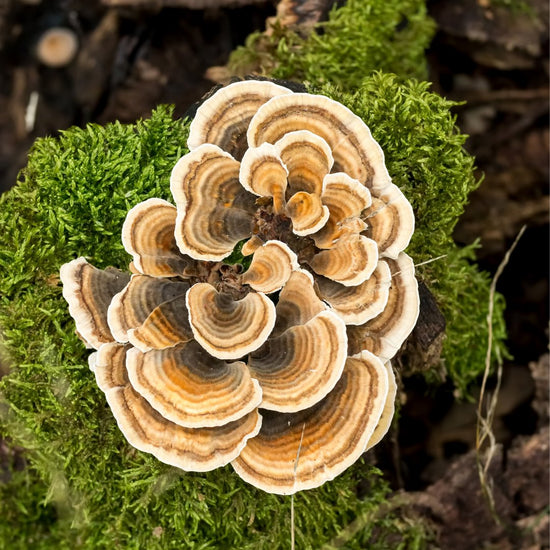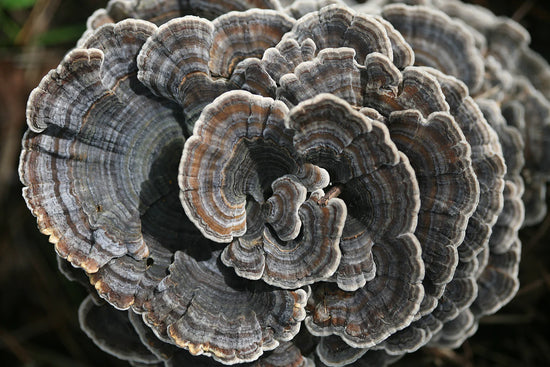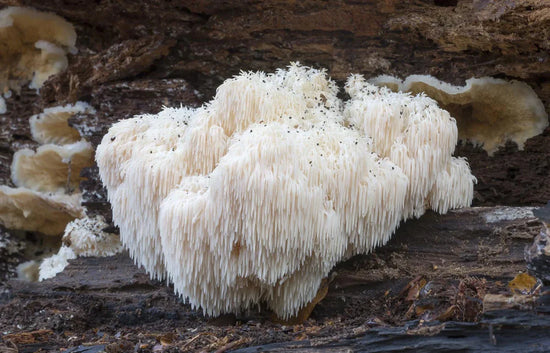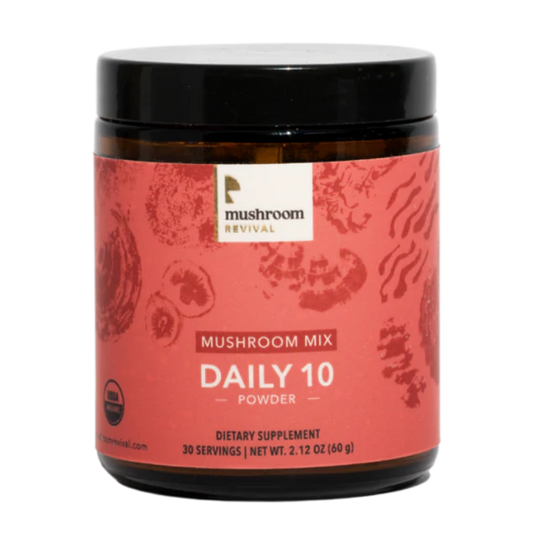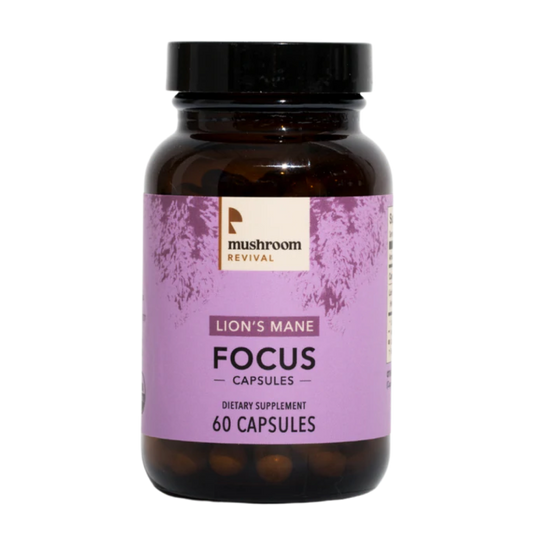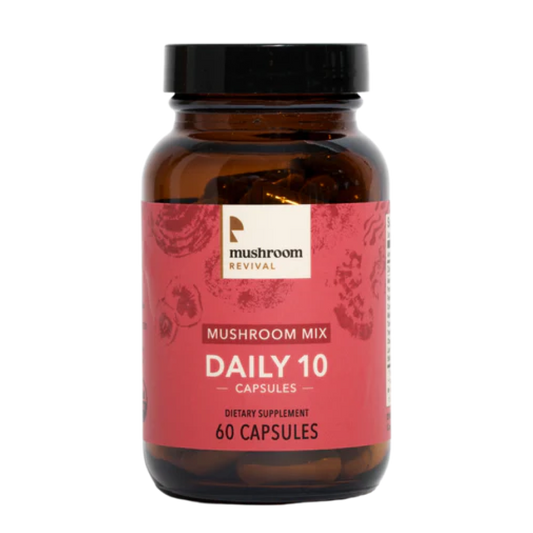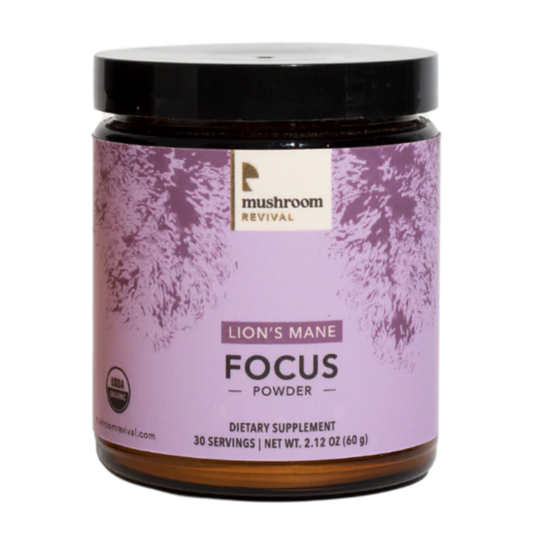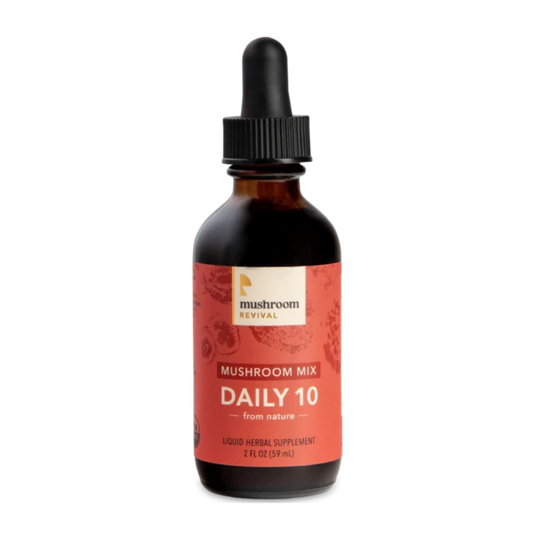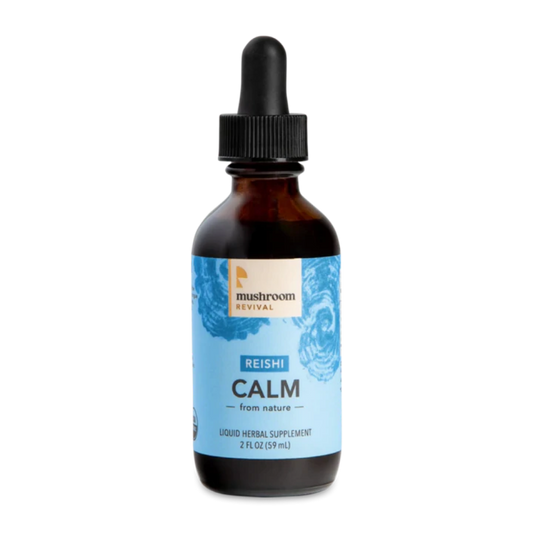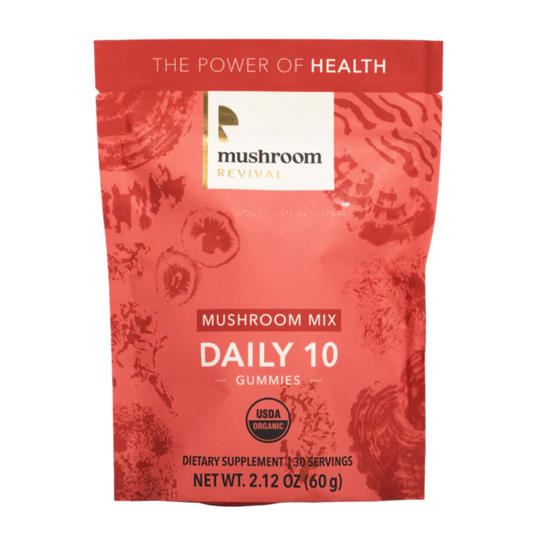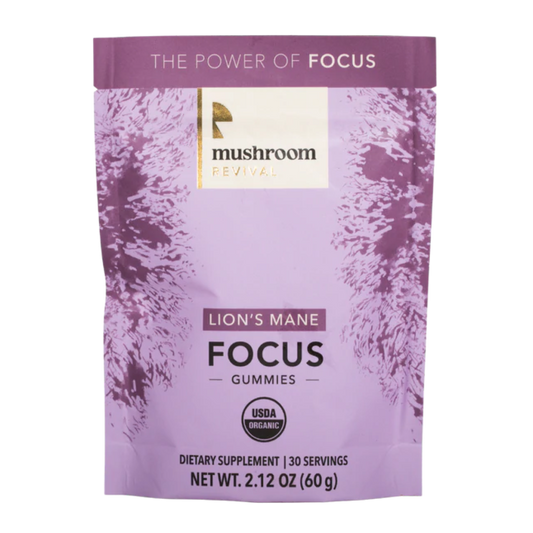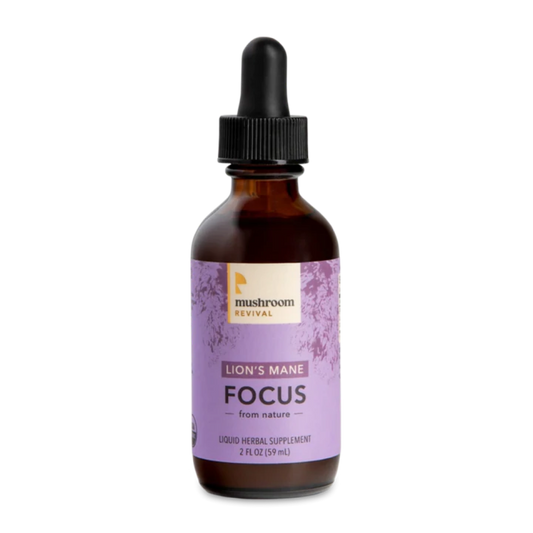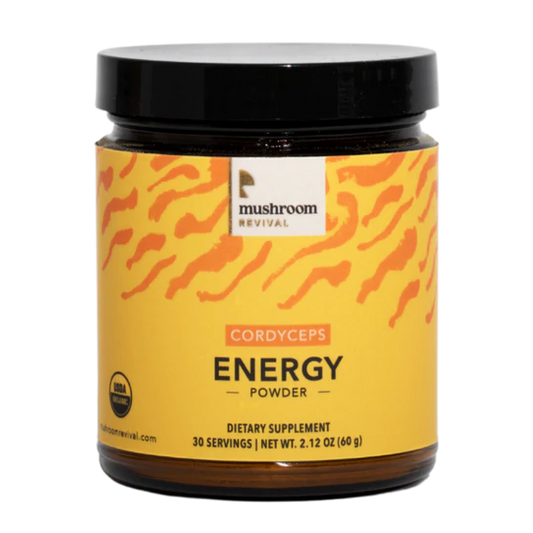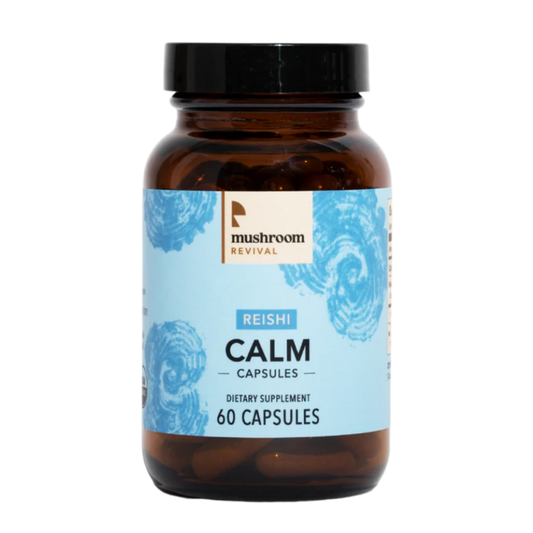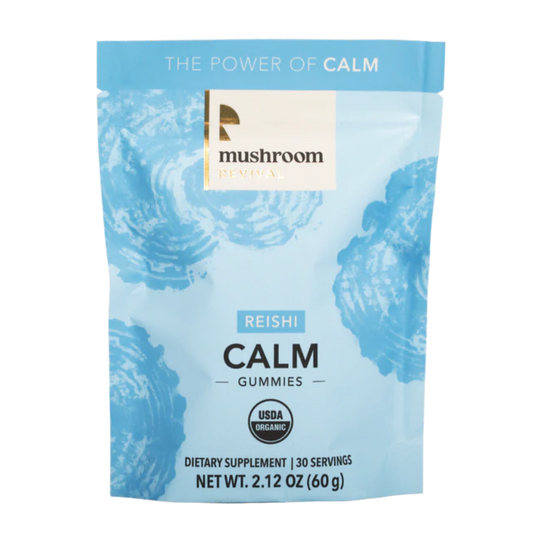Using Native Fungi to Weaken Invasive Trees with Abe Stone
Alisa Nappa
">
.js?container_id=buzzsprout-player-&player=small"
type="text/javascript"
charset="utf-8">

Today we sit down with Abe Stone from Michigan Tech to talk about his use of Chondrostereum purpureum — lab nickname “SuperPurp,” inspired by the animated TV series “Adventure Time” - to fight off invasive buckthorn trees in Michigan. We talk about how to find this fungi in the wild, how it works, how to cultivate it in the lab and how to apply it in the wild.
Sign up for our podcast giveaway here. Our next winner will be selected on June 26, 2024 and contacted via email.
TRANSCRIPT
Unknown Speaker 0:00 Alex, Alex 0:11 welcome, welcome. You are listening to the mushroom revival podcast. I'm your host, Alex Dorr, and we are absolutely obsessed with the wonderful, wacky, mysterious world of mushrooms and fungi. We bring on guests and experts from all around the world to geek out with us and go down this mysterious rabbit hole to try to figure out what the heck is going on with these mushroom and fungal beings. And today, we have Abraham stone joining us today to talk about how fungi can be used to suppress invasive buckthorn trees. And we'll, we'll talk about all the different methods and some some very interesting methods that that Abraham and others are using to to fight these invasive species. So Abraham, how you doing? Oh, I'm Speaker 1 1:00 doing awesome. Alex, how are you great? Yeah. Alex 1:04 Where are you? Where are you tuning in from? Speaker 1 1:05 I'm, uh, well, I'm from the Upper Peninsula here. So I'm from, uh, Houghton, Michigan. I'm based out of Michigan Technological University, and we're right on the QandA Peninsula. So, um, if you ever ever seen a map of Lake Superior, there's a little peninsula that's jutting out on the south end, and that's where I'm from. It's this little rocky, super cool little area, and up there in the Northwoods, pretty cold. Alex 1:32 Yeah, that's probably not my place to live, but that's awesome. How did you originally get into mushrooms and mycology? Oh, Speaker 1 1:42 that's, well, it's kind of a long story. It's a fun and long story. I originally started out when I was trying to figure out what types of cool careers are out there and what I found passionate about life. It I first I really enjoyed the idea of going to musical theater, and I spent a lot of time focusing on that, going to some college auditions and and doing that whole thing. I eventually ended up in Oklahoma for it, at Oklahoma City University. I spent a year down there, and I realized pretty quickly that it wasn't exactly what I wanted to do. I I'm from Northern Michigan, and up up there, we have tons of beautiful forests. And so I grew up outside and going for walks all the time, going swimming in Lake Michigan. It was a pretty awesome, pretty awesome childhood. And so when I went down to Oklahoma and realized how much time I'm going to have to spend in the cities and auditioning and working in those loud spaces, it just it. I realized it probably did me back, yeah, yeah, it probably wasn't a place for me. I really liked it quiet, so when the covid pandemic ended up hitting, I was sent home from my university, and I decided that I take that time to just live at the family house by myself, and take a semester off work a little bit and go exploring in the woods. And so I started going on walks every day and just trying to learn how to identify every tree that I had found in all these little plants. And part of that was the mushrooms. And for my dad's birthday, one day I he tells me that he and his partner were going to go to a mushroom foraging seminar. And I was, I wasn't very interested in and I was like, Oh, I don't know. I don't, I don't really know anything about that. And he was like, come on, it's my birthday. Like, it will be fun. It'll be super fun. And so I was like, oh, like, okay, and I went there, and they ended up taking some really studious notes during that. It was all about edible foraging. And I went back on my walks, and it felt like I was re exploring the woods there, because all of a sudden I, like, turned this corner, and on this birch tree that I loved, I saw this giant black thing coming off of it that looked like it was like, like, gnarly, witchy looking object. And I realized that that was Chaga. And I realized, oh my gosh, there it is. And so it just from there. It just became this whole spiral. And so I started going into the woods. It got my wild foraging mushroom certification so I can sell in the state of Michigan. And then I came up to Michigan Tech and fell in some some cool crowds, and here I am. It just kept going. It's been pretty great, yeah, Alex 4:39 and now you focus on how fungi can suppress invasive trees, specifically buckthorn, yep, but generally, how do fungi do that? Speaker 1 4:49 So fungi, you know, there's a whole bunch of pathogenic fungi out there, and that's the kind of fungi that we use for our bio control. So you have your wood decayers. You have your mycorrhizal associates. Stuff that we use, we work in the realm of fungi that live off of living tissue, and what we do is we specifically apply that fungus to an invasive plant, in combination with some of their form of management, and try to use it to reduce the amount of growth, of regrowth that happens when you when you injure buckthorn, for example, buckthorn is a is an invasive plant up here that it's an invasive tree that grows pretty rapidly. It's dispersed by birds. It can really affect the ecosystem and and come in when you've had any type of disturbance. So it really likes human, human affected environments, like parks and trails right next to where they mow in in these areas, uh, buckthorn really likes those places. And so when you, when you cut it, it has this remarkable ability to produce, like, hundreds of sprouts from a single stem. It it's it bonkers, what it can do. And what we've been doing is we've been trying to apply a fungus to it when it's been cut, which will hopefully divert more of the energy towards fighting back this fungus that we've applied and so it grows less and will allow for native regeneration, if not try to kill the buckthorn entirely. Alex 6:26 Interesting. I don't know anything about buckthorn trees at all, and yeah, usually I hear of other plants being super invasive, but I don't actually know much about invasive trees, specifically Speaker 1 6:42 wild. I didn't know about it either until I until I started, like, really wandering around the woods. And there's at least in the Upper Midwest, in the northeastern United States, they can be pretty intense. We have a couple of them up here, invasive buckthorn, which is comprised of two main species, common buckthorn, which is ramnis cathartica, and glossy buckthorn, which is frangilla olness. They're pretty closely related. Those two are pretty those. Those are pretty intense invasive trees up here. They come in and they affect. They not only get rid of the herbaceous layer that's under these forests, but it also will. It's super competitive, so it will stop the regeneration of other native tree species. And so you end up having these forests that are pure buckthorn, some of the other ones that people worry about up here. There's some shrubs, like invasive honeysuckles. There's a whole group of them, Japanese barberry, a Tree of Heaven, is pretty big. I know in the eastern United States, not it's, it's coming up through Southern Michigan. But they function differently than than invasive herbaceous plants. Alex 7:54 And is it a beautiful looking tree? I know a lot of invasive plants are, were brought to, you know, a certain country or region as, like an ornamental plant, and then it goes way out of control. Was that the same thing that happened with buckthorn? Yep, Speaker 1 8:10 so buckthorn was originally brought over. I think the earliest known record was in was, I think, the early 1800s and it was brought over both as like a hedge, a hedgerow plant and I brought over for its medicinal properties. So ramnis, cathartic, cathartic. It's a catharsis. So when you ingest it, it makes you throw up. And so that has that has some use, or at least it did before modern medicine and that. And so it was brought over for a couple of reasons, and then was super successful at getting eaten by birds and then being distributed around pretty much anywhere that the birds landed. And so it's all over the Midwest, Alex 9:03 interesting. And do they produce a fruit that the birds love to eat? Speaker 1 9:07 Yeah, they produce, they produce this, this blackish fruit, and it's not their preferred food. It's not something that they just absolutely love and go after, but they will consume it, yeah, and the tree itself. It's, I think it's a fine looking tree. I hesitate to say that any tree looks ugly. It definitely looks it looks different than the rest of the trees around it. So you can, you can pretty much tell common buckthorn when you walk past it, because it doesn't look like any other native tree that we have, Alex 9:42 and so you're using a species of fungi, C perpurium, which you call super perp. Where, where did, where did that name come from? Unknown Speaker 9:52 That name came from adventure type? Alex 9:56 Yes, where? Uh, what an adventure. Because I've watched. Venture time, and I'm not familiar with that. Speaker 1 10:02 You'd have to ask my you'd have to ask my advisor about that, because she she started calling it super poor in one of our meetings. And I'd like to just quickly mention who my who my advisors are. One of them is Dr Tara ball at Michigan Technological University. She's a forest health specialist and the mycology for the wood protection group there. And the other person I'm working with is Dr Sigrid resh, who is the coordinator for the Q and A invasive species management area, which, for those who are unfamiliar, it's part of a, what's called a sisma, and it's a, it's a, some, usually a multi county organization that deals with invasive species in a certain area, she has been focusing a lot of her research and her and her field work on finding alternative methods to invasive species control that doesn't only use herbicides. So quick, shout out to them, but the name just came up, and it felt really fun. And so we just been casually calling that in our meeting. And then now, yeah, I love Alex 11:11 the name I see. I actually just googled it. It's like a canned, great purple drink in the show, which I've definitely seen before, I just didn't make the connection. That's really funny, that's really funny. And I read an article about you growing the liquid culture into these mycelium balls. And I'm just curious how you go about doing that. Yeah, so Speaker 1 11:39 that's that was even that story has been kind of an adventure. We've been working on this for several years now. The work that I'm doing right now is actually built off of a master's project from several years ago. And you can grow fungi in, I'm sure, you know, in a multitude of ways that, you know they they're so diverse in what they like. And what we've been doing is we've been growing it on large trace of this agar media, 2% malt media. And at first, we were taking this gel like material that the fungi was growing on and producing this big mat. We would take that and blend it up and then add a little bit of water to it so that it's a little bit more diluted. And we put that into a spray bottle or like a like a little sippy cup kind of thing, and we'd end up squirting it onto the buckthorn stems that we would cut. And that was effective. But sometimes when you do that, it can be kind of difficult to get it out of the squeeze bottle. But it's, it's pretty simple methodology. We grow the fungi in the lab on the media itself, and that, we literally just add water and then put it on the tree. And how people have done that is, is, you know, is so diverse people I've done a ton of different ways. The way that I did it with the mycelium balls is we created a broth that contains all this already, like it's all it's all soluble. It we add all the sugars and all these other little chemicals in there, stuff that the fungi will really like. And we add a little bit of something called Fum sila called fumed silica, which helps break up the fungi as it grows. And we add in just a little bit of the fungi in like little, tiny rice sized pieces. And we put it on a rotary shaker. We leave it for 10 days, and as it grows. It loves this broth. It it's literally a soup. It's fungi soup, and it makes these little balls that look like these alien creatures. And it's happy. It loves growing in it. And we just blend that up. And that's it. Alex 14:02 That's, it's my favorite looking liquid culture, you know. I mean, you can make liquid culture, and it just kind of looks like, like broken up SCOBY, floating in this, like water. But when the mycelium makes these, like, perfect, round balls. I mean, it looks, yeah, it almost looks like Boba, in a sense, like it looks really, really cool. Yeah, yeah. I don't know if it serves any purpose other than just looking really, really cool, but I think it is the most visually appealing looking liquid culture that I've ever seen. Speaker 1 14:35 I think I think, well, esthetically, it's the most exciting thing that I've done in my in my whole academic career so far, it's been going into the lab the first time because I read this technique. It's, this is not a new technique. It's something that I read and that people had been doing in some work in Finland using this fungus. And I saw this method, and I thought, Oh, that'd be really cool for. Growing it here in the US. And so I just got the ingredients and did it myself. I had no idea what to expect. I walk in and I see something from, like, from a sci fi movie, and it just, it just made me a heart flutter. I was like, Oh my gosh. This is, this is what I am here to do. It was so awesome. Alex 15:22 Wait, so going back to the trays, I'm trying to visualize, like, how, how big are these trays? You know, I've only worked in little Petri plates for agar, but I've never heard of anyone growing agar and in a big tray. What was the process like to do that? Yeah, Speaker 1 15:39 so it's basically the same thing. We make the media, and then we pour it, instead of pouring it into a Petri dish like you normally would and making, like a little, you know, half a centimeter deep thing, we pour it into a big ours are like eight by 12 inch pans, and we pour a layer into that, as long as you keep it sterilized, then there's, you know, there's not that much risk of contamination. It is a much larger piece of media, so of course, the chances of it having even a little bit of contamination go up. But in general, we had pretty good success with it. So we'd make the media, we'd sterilize it, and we'd sterilize the pan, and then under a fume hood, we'd just pour it in, and we just make it the same way you'd make a petri dish, except 10 times the size, Alex 16:33 and that works. Yeah, I guess my question, do you have a lid on top of that? Or do you put it in a bag? Or, like, how do you Oh, Speaker 1 16:41 that's, that's where we we get kind of creative. We we just put it a little bit of aluminum foil over it, usually, like two layers of it, and then we put it into a big piece of Tupperware, and then put the lid on that, and we sterilize it all and just let it grow in this really nicely incubated area. And it does well. 10 days later, shout Alex 17:00 out to Tupperware. Yeah, Speaker 1 17:04 kitchen appliances everywhere. That's what we've used for a lot of this. It's pretty awesome. Alex 17:10 Yeah, yeah, and, and you were talking about taking the technique from a paper in Finland. Do they have invasive buckthorn in Finland? Or were they using it for another tree or something totally different, Speaker 1 17:22 yeah. So they use it for a different type of controls. Um, from the papers I've read, most of what they use it on is deciduous regeneration in coniferous forests. So they manage their forests pretty heavily there. And I for the in the conifer series, they I often have a lot of regrowth of birch and Aspen and these early successional species. And so conductarium proporium, the fungus that we're using, has a pretty high preference for deciduous trees. And so what they do over there is they put it onto the birch trees and the birch tree sprouts, and they tested on some other fast growing species, like I, like trem, like the Aspen species out there, and they've tested it on European Rowan or mountain ash. They've also tested it on some invasive species in the Netherlands and some other places in Europe. For example, black cherry, which is a pretty common tree up in the Northeast. It's invasive there, and so they have tested it over there on that invasive species, specifically the people that I took the methodology from, they do it mostly for for that fast growing, early successional regeneration. And so we're just applying the same, the same methodology, but for an invasive tree in the in the US. Alex 18:51 And I'm going to try to pronounce this very interesting, long name, chandro starium purpurium. Speaker 1 19:02 Oh, you along those conjo star that was so good. That was the best attempts I've had. It took me a long time. That's why we call it super porp, um, yeah, Alex 19:13 I like that name better. I'm curious what it does to the buckthorn trees and then all you know, all the different trees, like birch that you that you just mentioned, yeah, congestarium Speaker 1 19:24 proporium. It's a it's a wound pathogen. So it's one of it's a native fungus found in the northern hemisphere. It's found all over the United States. It's found in Northern Europe. It's found in Siberia. It's found all across the all across the boreal ecosystem, and it typically infects a tree by entering a place where there's been some type of wound. So if a branch falls or, you know, it's damaged in a windstorm, as in the late fall, when congestion is fruiting, if a spore lands in in the little wound there, then it's going to grow. So. And I what it does is it consumes the xylemic tissue within the tree itself, which is the water bearing vascular tissue that brings water all the way up to the top of the tree. And you know, to use an analogy, it clogs up the machinery a little bit so it stops that water from making its way up to the tree. The fungus is also known colloquially as silver leaf disease, because, since the water can't make it to the leaves up top, it causes the outer layers of the leaf tissue to separate from the internal ones. And so it gives this kind of like silvery papery looking appearance to the leaves. And so it can cause this type of disease over several years, and I with a with a really intense infection, it eventually will kill the tree. But it's a but it's a native fungus to all this, most of this area, and it's found in all types of forests. Usually it's our birch. It's actually Alex 21:03 a really beautiful mushroom. Like the purple color that it can create is really, really pretty. And I'm, I'm just curious, you know, with a lot of the times when humans try to fight an invasive species with another biological species, uh, there tends to be unintended, negative outcomes of it, you know, attacking other species that are unintended. So what is the current thought process of the intention of just attacking buckthorn trees? But the the possibility of that, you know, going to unintended birch groves or certain other trees that you're not intending to infect. That's Speaker 1 21:48 a that's a great point, and that's one of the primary parts of this research, because the fungus is native and is already pretty ubiquitous in the environment. We're not so much concerned with how it's being introduced to certain areas. But one of the questions is, then, if it's near a forest that you're trying to be really careful about, or if it's near, for example, an orchard, because country and proporium is known to to infect prune trees and can and can cause some issues there. What the best methodology is for that kind of thing? A couple studies that I've read have suggested that more that more applications of the fungus doesn't really affect the actual spore load in the air, and that the fungus itself is already so so omnipresent in the environment that the chances of something getting infected by the specific strain of fungus that you apply to an area is negligible to, you know, non existent. It's nothing that I have read suggests that this is something that should be super concerning, but I do think it would be probably a good idea if you have, if you're in an area with tons of orchards, and you have this one Buckhorn patch, that's right, that's completely surrounded, you know, common sense is probably not to use this fungus for that type of management. It might not be the tool for it, but when you're up in the up, where we really don't have very many orchards, it's so cold, and we have these forests of that already carry so much fungal diversity and so much and there's so many components to the systems here, adding this One when you already have a, you know, a buckthorn colony within already this quite a diverse forest. It's a good tool for that type of environment. Alex 23:54 So I used to grow a ton of Cordyceps militaris, and it there's a very common practice in China to produce sterile fruits. So fruits that do not produce the parathesia, so they're just kind of the, yeah, they don't produce any spores. And my guess is, I read another paper that that showed that the second they start, you know, it's like a couple weeks after they start producing parathesia, the the main kind of functional compounds, cordyceps, in adenosine, drop. So they go way down. And so my guess is that these farms are growing, you know, sterile, these kind of sterile fruits, because they want to kind of preserve high levels of these compounds. But a thought was, if there was some way to get a strain that was sterile, and, you know, would you could still grow the mycelium, it still potentially would, you know, infect the buckthorn? Trees, but it, you know, it, and it still might produce fruits, but they would, there is no spores that would come out. I don't know how easy that would, but that would be, or is it just, you know, finding one genetic mutant or something like that, just just a thought like, I don't know how applicable or feasible it would be, but, yeah, yeah. It's always tricky dealing with biological, anything, any anything biological, really, because of, yeah, they're alive, they do what they want, and sometimes what they do is not what you want. So it's always very tricky, yeah, yeah, Speaker 1 25:40 yeah, it is. And yeah, of course, that's that's the big thing with all of this bio control methodologies is, as people have started to realize just how interconnected all of our all life is, and how things that you may not think might have an effect down the road, actually do, and they can be quite profound. It's something that we've been really trying to focus on with our work. We know that contrasting and proporium is a pretty good biocontrol for certain tree species, but making sure that everything is safe, like you said, finding strains that might be really effective at killing a tree, but might not be very effective at producing spores. That's certainly been a part of research in the past and but that's probably the next step that we go with this once we know that cpporium could be an effective tool for buckthorn, we've been doing it in some pretty small field trials, but expanding, seeing what types of genetic variations we have, and if we have different types of host specificity, if we have strains that do have that low level of off target spread, or just, you know, don't produce spores in the first place, that all that stuff is, um, that's, that's all really important discussions for this type of work. And, yeah, it's pretty cool. Alex 27:09 And so what are the current techniques to control buckthorn? Because obviously we can't cut them down, or we'll make the problem worse. So what is it? You know, I know some people like pour lead down to kill trees, or do, like, probably some chemical Speaker 1 27:29 applications or something like that. There's a lot of chemicals that people use for buckthorn. Specifically, people use Roundup or glyphosate. That's, that's the most effective one at killing buckthorn. It does also humans. Yeah, it does a pretty decent it does a pretty decent job. So what we're trying to do is we're trying to avoid using glyphosate, and also, when you apply glyphosate, there's always the potential for user error with glyphosate can cause a lot of damage to any type of regenerative plant growth that might help the buck help grow over the buckthorn. And so there's always that potential for off target spread, if, if you don't do it carefully. And the other alternative that we've been doing for buckthorn, that I did for a few years, was manually removing buckthorn one by one, which can be pretty arduous, definitely back breaking if you don't have the right tools. It does work, because it gets the plants out. And it's not just mowing and then having all that regrowth. But you know, that's that's another challenge too. Is if, when you have these whole forests of buckthorn, what's really the most practical way of doing any type of meaningful management for these forests, because they can just become pure buckthorn. And, yeah, when you have only buckthorn in the understory and in the seed bank, then when you do cut down the buckthorn, all you have is the the buckthorn coming back up again. So another part of the management is also reseeding the areas and with seed mixes that have fast growing plant species that can quickly out compete the buckthorn in terms of like, in terms of height, and just kind of crowd the sun out from them. It's a it's a multi tool technique to get to work with buckthorn, definitely a challenging organism. Alex 29:38 I took, I took a tour of this farm called D acres in in Maine, I think it was or New Hampshire, and way back in the day. And they had this really interesting technique for for taking out big stumps of trees. So they would, you know, chop down a tree, and then they had this huge stump, and they're like, oh. Not digging that out, you know. And so they had, they use hogs or pigs, and they put the pen around the stump and and they said the hogs, or the pigs, would just love to dig it up. And, like, they they had a blast doing it. And they're like, All right, yeah, go for it. We're not digging it out. But I know you were also saying how some of your colleagues were using both goats and insects as well to as biocontrol, and I just thought that was really cool. So how are people using goats and insects to deal with buckthorn? Speaker 1 30:36 Yeah, so there's a another whole really cool body of literature and tons of practitioners who who are testing these cool methods out. The goats are really fun. One the my collaborator, Sigrid res, she takes goats out, and she has this current project. We're taking goats out to this really heavily buckthorn infested area, and we cage the goats in just for a little bit, and they eat all the buckthorn. They like anything up to a certain height. They eat, I mean, they eat everything, but they and it's perfect, because all you have there is buckthorn. And so you end up right at the beginning of the season, if you eat all the foliage, the plant is eventually going to have to use a lot of its stored energy to reproduce, a whole lot more foliage. And then you bring the goats back in after the leaves are back, and then the goats eat all of that. And then the plant needs more energy to make more of that stuff. And it it can't continue, you know, deepening its resources, because you're constantly taking away the ability for it to photosynthesize and produce sugars. So you do this several times over the season, and eventually you the idea is to kind of starve the buckthorn now and allow for native regeneration to come in and then out compete it. So people have been cigarette is doing that right now, with the goats and then insects is a whole nother thing. Insects, people have been trying out bringing insects from an invasive species native range that has a really high fidelity to the invasive plant, and that's been successful, in some cases, at eliminating or heavily reducing the specific species that is invaded without off target impacts. Alex 32:27 Yeah, I know a lot of people that use, I think it's just called Silvo silver silvopasture, and in using various animals in succession in forested areas. So using cows and pigs and then sheep and goats, and then chickens or poultry to, like, go through areas in succession. And, you know, just like you're saying with the goats, you know, taking out invasive species and removing, you know, shrubbery, and this is, like, a really good forest fire technique of removing all that debris that's really flammable, and they're all pooping on the ground, so they're all, you know, creating fertilizer and all this stuff. And it's just like a really good thing that I think a lot of our ancestors did for managing land, that I think we just forgot about with huge industrial agriculture of just keeping animals in a pen away from the rest of your land and not grazing them intentionally throughout your land and and really taking care of forests and big plots of land with your animals. So I really like that idea. That's that's really great. And then also insects. I mean, the US is very afraid of insects, like, I've eaten quite a bit of insects, and I know a lot of countries are really big on insect culture and just growing them for food, and just, you know, having kind of more of a relationship with insects that we just don't have here in the US. So what is that? What does that research entail Speaker 1 34:06 that that is a whole complicated, really exciting field of research that I personally don't have much connection to. I since I do most of the fungi stuff, but I know what people do is they are taking these native, sometimes native, sometimes once brought back from from the homes this country of the Invasive species, and they test them in small areas, and specifically put them on there, and then kind of let them do their thing. And so since insects are they're pretty independent. They're not going to listen to what humans tell them to do that a lot of that research is figuring out, okay, where are these going? Are they effective? At spreading. And so you can't track the insect. You can't attach a little thing to them, but you can bring the insect or check, check a whole bunch of plants in different nearby areas and see if the insects are growing on those and yeah, using and partnering with the other living things that are around you is, is the, really, the the core of this type of work, it's kind of coming back to, you know, partnering with with these things that have naturally been doing whatever they've been doing for, you know, 1000s of years. And it's pretty cool, you facilitate. Alex 35:46 I actually just interviewed someone not too long ago from Japan, and he was doing some research on influencing a gene in a specific fungus, a mold, fungal parasite, that actually he switched a gene in the fungus that turned the fungus into from a fungal plant parasite into a plant symbiont. And so it actually went from damaging the plant to actually improving the plant growth. And I'm curious if you could just do this with, you know, somehow, you know, I know the whole genetic engineering field is very controversial, of us kind of playing God and switching genes on and often, what are the outcomes we don't really know yet for a lot of things. And so, yeah, I'm just curious if there's any application there, and just switching a gene in the buckthorn for it to be kind of, to turn it from a invasive, kind of, I'll use the term parasite into one that's more symbiotic in the ecosystem. I don't know is very, very interesting conversation that, yeah, it just kind of turns that I was just having a conversation with someone about, like, Free Will versus, you know, like, how much free will do we have? Or are we just kind of a bio computer? We're just kind of a complex algorithm, and based on our environment and our internal whole complexity of genes and and our Myco and microbiome. You know, it's like we're already pre dictated. Our future is already pre dictated based on all those genes and bacteria and things like that. And if we're able to just switch something on and off, like we could totally change our our whole trajectory as either a species or individually. So, yeah, it's, that's, it's Speaker 1 38:07 pretty remarkable as I, as I've gotten into more genetics work and learning about how gene expression works and how and how. Yeah, we do have these. We have this code inside of us that determines what we look like, how we act, how we sound, all these other things. It's, it's when you look at it so closely under that microscope, it's, I mean, it does make you feel like a little bit of a computer. Like, yeah, everything's already written in there is everything like feels a little predestined. But then at the same time, you step back and you know, and then you feel like kind of the serendipity of life and how you might be made up of something you might be made up of, this one specific code of DNA. But I know who's to deny that you wanted to make a podcast and you have one. Now, you know, Alex 39:06 maybe had a podcast gene already, and maybe you had Speaker 1 39:09 a podcast gene, yes, yeah, no, it's, it's really quite interesting. I mean, the more you know it just, it kind of just flips the way you look at life, definitely working intimately with this fungus has has changed the way that I viewed ecology and how how I connect with the things around me, what it means to to work with another organism. I mean each fungus, I work in a fungus lab, so I do a lot of contrasting and proporium work, but I've also looked at, you know, hundreds of other different strains of fungi, and I'm sure you've seen this too, but they all look very different, and they all grow differently, and they all like different things. And even within a species, I've been working with a fungus that I just did a whole bunch of a transfer, a. Action transfer, making sure that they had new media. And some of them within a species had white mycelium, and one of them had this bright blue color I had never seen it before. And even within the same species, it's amazing how different they can look and how some of them take a long time to grow they they're pretty picky about what they like to grow on. And then some of them are like, yeah, yes. 2% malt, my favorite. And it's, it's been pretty fun to get to know them a little bit. They can't talk to you like a human does, but they can, but there's so much to learn from them too. Yeah. Alex 40:39 I mean humans as well, even humans like we're all the same, genius and species, you know, we're all sapien, but we're all pretty, pretty unique. We're all pretty different. Oh yeah, Speaker 1 40:52 yeah, fungi have to be the same way. I'm in. Plants are too. They're, I mean, it's, it's pretty exciting. Alex 41:01 What? What would you say is your favorite part of doing this work? Speaker 1 41:07 Well, I get to be outside for a good portion of it. I and be in these i and just be in the sun in the summer and, you know, doing my buckthorn work. And, you know, that's been pretty great. I think my favorite part, though, has been getting to know each the fungi in the lab, for sure, and I've met some really great people, Tara and Sigrid, with whom I've worked with for several years now. They're both one one of them's a mycologist. One of them is an invasive species specialist. They have, it's, it's fun to see the ways that people connect through fungi, even if you may not be a fungi person. And getting to talk about this work, even with my family at dinner, I mean, they think it's like, they think it's cool, and I think it's really cool. And being able to, you know, sit down in the lab and, like, work pretty closely with something, it just made me view life a little bit differently and see how, how many forms life can take. That has been the best part of this research. Alex 42:17 On the flip side, what is your least favorite thing? That kind of is, like nails on the chalkboard that you're like after this research. I never want to do that again. Or, or maybe it's, maybe it's one thing that, you know, your whole lab got contaminated one day, or, you know, some mistake happened, or something like that. Speaker 1 42:36 Well, um, I did have, I've have had my fair share of lab mishaps, lots of broken glass. I am not known for my precision with movement, and I've had several instances where I've just, like, knocked something over that I really needed at that time not to break. And that's a challenge of working in a lab setting, is like, I just will do something that, like, 10 minutes later, like, Oh my god. This is making my life so much harder. And I have, I have, this is another long story, but I have accidentally gotten fungus in my mouth by accident in the lab and so, Alex 43:27 so I won't ask. I'm sure it was an accident. Speaker 1 43:33 It was, I can say that much. But I think kind of the the tediousness of working with lab materials and glassware is definitely a challenge for me. I really like being out and in, working with the fungus itself outside, and seeing mushrooms outside. I think I'm definitely more of an outdoor type of biologist than than an indoor type. But, you know, saying that it's, I think it's important to be able to, you know, appreciate both, because I wouldn't get the chance if I was outside all the time to really know what the fungus looked like on its own. And so, yeah, yeah, and I looking at it under the microscope is a whole different type of exploration than looking for mushrooms in a forest. It's, it's, it's very cool. So I think I just need to refine my, my physical, my physical abilities in the lab a little bit, and that would be a little bit more enjoyable. Alex 44:40 Yeah, I going back to the Cordyceps cultivation. We were growing all these Cordyceps in mason jars. And there was a time where we had, like, over 20,000 mason jars growing in our grow room, and we got so and you can imagine, with 20,000 jars in a room, they're bound to break. All the time and fall off shelves and all this stuff, and we got so numb to the sound of glass breaking, like it was so common on a daily basis to hear like 20 jars breaking all the time, that we had this really funny moment where we had some people visiting the farm, and there's, there's this moment where we're in the middle of a conversation and a jar fell and broke, and we continued talking like nothing happened. And they were like, are you okay? Like, I heard something break. And we're like, oh, did something break? Like, we're so numb to that sound of glass breaking that we're just like, oh yeah. We had a broom and dustpan set up, like, right in the grow room, just just like it, just in case, on a daily basis, you know? But yeah, it happens in you have a lot of glass it there. It's bound to break. And, yeah, it's part of the reason why I don't have that that setup anymore is because I also love going outside, and is part of the reason why, like, orchestrated my life in a way where I can have more outside time. And I was getting such a beautiful connection with these mushrooms, but only in kind of like an indoor, sterile environment. Yep, and it was beautiful in that moment, in that phase of my life. But there's something so healing about just being in nature, how nature is set up, you know, and just, yeah, you know, forest baiting, you know, forest bait. It's Speaker 1 46:37 such a it's a real thing. And I it is so love. It's so meditative. In the up, all we have are forests, and in the Keweenaw Peninsula, we have some pretty cool mountainous areas too. The bedrock is right there at the surface, and the rocks are over a billion years old. It's a really beautiful place, and we're and so walking around in the woods there, you feel, you know, I when I'm looking for my black trumpet patches, I I'm staring at the ground, and I, you know, I'm surrounded by this rock that is so old, and these mosses and lichens and the black trumpets up here, really like Northern red oak and so I'm, I'm surrounded by these beautiful red oak trees on the side of a mountain. And that is, it's such a wonderful feeling. I mean, there's nothing like it. It's, I mean, you just feel like you're surrounded by so much life, and then it's like you get to call them your friends, not to get spiritual. Some of them really, Alex 47:45 yeah, some of them your enemies that you inject super, super per Yes, yes, yeah, but most are your friends. Yeah. Most are my friends. Yes, so say you had an unlimited team, unlimited funds, time, equipment, and, you know, hands in the field to help you. What would you do? Oh, there's Speaker 1 48:14 so much that I would do. Most of the work that I have done, I've done while also pursuing a full time degree, which has made it quite challenging for me to invest all the time into the project that I really want to and so we've actually been planning this out within the next, within the last, you know, six months or so, and seeing how we might be able to expand upon it. But the big things that we would like to do next are testing multiple different types of super port strains and seeing if you know how the genetic variability of the fungus might differ by region, and if we can identify one strain in particular That is pretty suitable for this type of work, because how, the how the strain grows, like we said, they're they're all kind of different, and one of them might be my like the idea of buckthorn, a whole lot more than others. And at this point in our research, we don't have the ability or the the amount of strains to go and collect all of these, and I think that that would greatly expand the study, and we'd learn a lot more about the ways in which it can be used as a, as a, as a management tool. And then the application that we have used, we've made gel like squirt bottles to put it on there. We've made, I've made the this, this balls the soup spray, I'll call it. And I blended that up and put it onto buckthorn. That actually has been a pretty cool had. We've had some pretty cool results so far. We've been able to re isolate and find fruiting bodies on the buckthorn that we inoculate a year after we we spray it on there. So we know that that method works. But we want to see if the specific type of method, whether it's squirt bottles or a spray or some new method, like a great soaker, Super Soakers. Yeah, make it. We can make a little, you know, plugs, like they would for for a Shi talking mushroom log, right? You could do that for cpporium, and then hammer that into a bathtub tree, seeing how these different types of tools that, as long as they carry the fungi, they might be effective at controlling the controlling the resprouts. So expanding on that, we'd like to see if you know, we know that there have been multiple introductions of buckthorn too. So there's also genetic variability there, so both with the fungus and then with the thing that we're putting it on. And so it might be, it might be that the fungus is really effective in one area, but not so effective in another, you might need a strain from a more regional area, which is ultimately the goal is to have a big body of C reportium that you can you know, you have your Michigan isolates, you have your main isolates, you have your Pennsylvania isolates, and so you don't have to go far in order to to Use what you got and creating kind of a a more national, nationwide availability of this fungus. And that also works for using the local tools for the buckthorn management. So you're not introducing something new. Uh, there's lots. So those are probably the big things that I would like to do next with this work. Uh, Tara Sigrid and I, we've already been, you know, talking and thinking about it, looking to see if there's, you know, people around that would be interested in doing this type of work. It's been so it's all, it's all our gears are rotating on it. Alex 51:59 Nice. Yeah, I can't wait when you train the goats to operate a Super Soaker, and you're going on a hike and you just see a stampede of goats holding, uh, squirt guns, right? Would that be funny? So where can people follow your work in the future and keep updated if they want to reach out to you. Speaker 1 52:23 Where can people go? Sure. So probably, for me, the best contact would just be to you know, over email. I'm I'm friendly using AF stone@mtu.edu and I'll probably be working on this project for a little bit. Here, some other people to get in contact with, especially if they are interested in, you know, partnering or learning more about kind of the the study as a whole, as opposed to the like this, the specifics of what I've been doing. Tara ball and sacred brush are both professors at Michigan Technological University. All their contact information is online. And so if you just look up the forest health specialist, wood protection group, or the chemo invasive species species management area, all their information will be out there too. And so they're, they're doing a bunch of work on this, and would probably be happy to talk about it as Alex 53:17 well. Sweet. Well, thank you for coming on. Really appreciate it. Unknown Speaker 53:21 Thank you. This is such a pleasure. What a cool podcast you have. Thank Alex 53:24 you. Thanks. Thanks for being a part of it and helping it grow and and thank you for everyone for tuning in and shrooming into another episode of the mushroom revival podcast. We cannot do it without you. Wherever you're tuning in from, from around the world, if you want, if you like the show and you want to support it, we don't have a Patreon or any way that you could donate directly financially, but we do have a mother brand called mushroom revival, and we have a whole line of organic functional mushroom products, from powders to capsules, gummies, tinctures. And if you are curious, you can use the coupon code pod treat, and it's just for listeners of this podcast, and for a surprise discount code, if you don't want to spend any money, we have a giveaway going on. The link is in the bio. We pick a winner. Winner once a month, so you can win some mushroom goodies. And we also have a bunch of free resources on our website as well. We have a whole line of free ebooks that you can download, all from information on psilocybin, micro dosing, functional mushrooms, ecology of fungi in general, and the ecosystems cooking with mushrooms, etc. We write a ton of blogs about all all information about mushrooms and fungi, and other ways to support the show, if you want to leave a review, that goes a really long way, and just spreading the word about mushrooms and fungi, you know, if you learn something cool in this episode or another episode, tell your friends, tell your family during dinner, um. Um, you know, tell, next time you go to the grocery store, tell, tell the Bagger One fun fact about mushrooms and, and just keep this mycelium thread going. You know, have people excited about mushrooms, and fungi goes a really long way. And, and also, I, I do have my, latest book, The Little Book of mushrooms on the website as well that you can check out is also in pretty much every single bookstore that you can imagine, specifically in the US and so, yeah, it's really cute coffee table book. Check it out. And as always, thank you much love and may the spores be with you. You Transcribed by https://otter.ai







